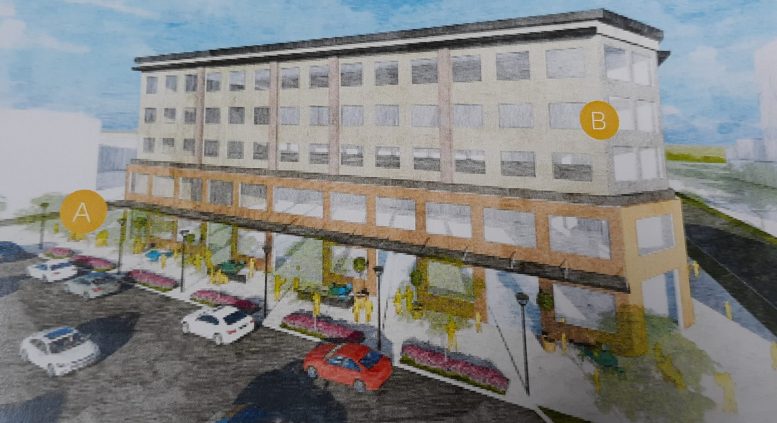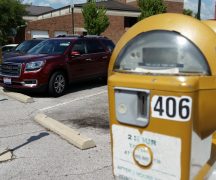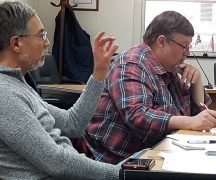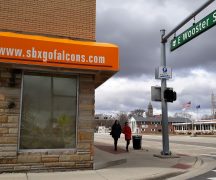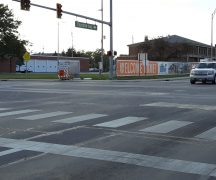By JAN LARSON McLAUGHLIN
BG Independent News
Bowling Green officials are tired of the city’s zoning code being a roadblock rather than a roadmap to the community’s land use goals.
And now that a study has confirmed the city’s zoning obstructs the type of growth the city wants, legislation is being created to change the zoning code.
“We have done some great planning for our city,” council member Rachel Phipps said last week during a meeting of the Planning, Zoning and Economic Development Committee. “Our zoning code should help.”
But instead of helping, the zoning was hindering.
So last year, Calfee Zoning was hired to do a “diagnostic” on the current zoning code.
“Calfee concluded not only that our current code could be doing much, much more to advance our land use principles – but in many places our zoning code acts as a barrier to our vision for the city,” Phipps said.
Calfee evaluated 99 current zoning code provisions for consistency with the city’s seven land use principles. Following are those principles and whether the current zoning helps or harms them.
- Land use plan calls for a “highly livable urban form that creates and preserves community.” That includes walkable centers in each neighborhood, a strong downtown, and an environmentally sustainable city. – Six of 99 zoning provisions promote this goal; 36 are barriers to this goal.
- Promotion of “positive, appealing first impressions” by improving key gateways with lush landscaping, open spaces, street trees and monuments. – 11 of 99 provisions promote this goal; 41 act as a barrier.
- Cultivation of a sense of place and local character through the introduction of placemaking initiatives and amenities such as farm-to-table restaurants, microbreweries and farmers markets. – Seven of 99 provisions promote this goal; 41 are barriers.
- Address the link between land use policy and economic development by naming a strong and diverse business base as a goal. That includes encouraging entrepreneurship and growing the university. – 12 of 99 provisions promote this goal; 38 act as barriers.
- Expansion of housing options, including apartments, condos, townhomes, small-lot single-family homes and accessory dwellings in the city. – One of zoning code provisions promotes this goal; 66 are barriers.
- Creation of “good neighbor” neighborhoods – 13 provisions promote this goal; 41 are barriers.
- Encouragement of “easy access to health and fitness,” including more biking and walking paths, and recreation areas in every neighborhood.- Four provisions promote this goal; 35 act as barriers.
Municipal Administrator Lori Tretter agreed that the current zoning code does not work well with the land use plans adopted by the city.
“There are impediments to our plans in our own zoning code,” Tretter said.
Phipps, chairperson of the Planning, Zoning and Economic Development Committee, suggested that the city work with Calfee to come up with the zoning code revisions.
“What we’ve read from Calfee is really exciting,” council member John Zanfardino said.
“We’ve known anecdotally our zoning code needed work,” council member Greg Robinette said. But the diagnostic review showed how much the zoning code needs to be changed.
The goal is to have a zoning code update completed by the end of 2021.
“This would be a great roadmap for us,” Tretter said.
The zoning diagnostic performed suggested that the city identify priority areas, such as the new Gateway District and the downtown, to create character-based, mixed-use zoning districts. Instead of focusing only on the uses permitted and prohibited in these areas, Calfee urged the city to focus attention on the feel, look and scale of these districts.
The Gateway District is proposed along East Wooster Street, between Manville/Thurstin and Enterprise Street.
“Our zoning code should set our plan for our community in motion,” Phipps said. “It should be clear, usable and consistent because such a code protects our planning process and the plans vetted by the public, and makes things predictable for property owners.”
Phipps also talked about the benefits zoning code changes could mean for the downtown.
“It’s a wonderful opportunity to look at what we want our downtown to be,” she said.
“We’ve done a good job planning and considering what East Wooster can be – and now is a great time to renew our focus on downtown,” Phipps said.

